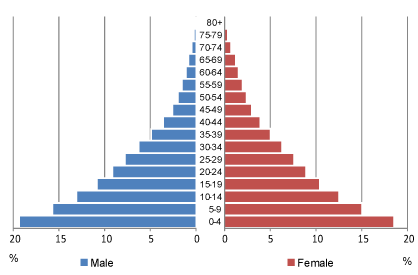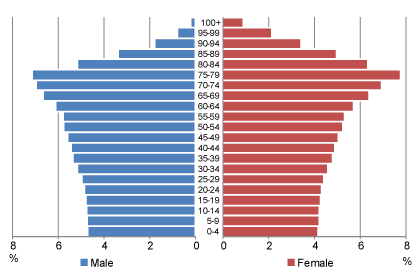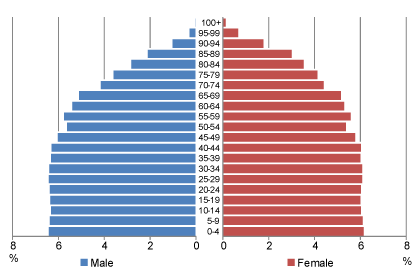Age-sex structures and population pyramids (cont.)
Describing population pyramids
There are certain terms which are commonly used to describe age structures of populations, such as 'young', 'old', 'declining' etc. The table below shows the three most common types of population pyramid, with descriptions of the features of each.
Description |
Example |
Young and growing Young populations have a typical 'pyramid' shape, with a broad base indicating high proportions of children. Indicates a population undergoing rapid growth. |
Source: UN Population Division (2011) |
Old and declining A top-heavy population pyramid with higher proportions in older age groups indicates a declining population. This may result from a long period of below replacement fertility, alongside low death rates. |
Source: UN Population Division (2011) |
Stationary A more rectangular population pyramid indicates a population which is neither growing nor declining. There are similar proportions in each age group, apart from at the oldest ages (due to mortality). The population pyramid to the right is just an approximation of what a stationary population would look like. The small fluctuations at age groups 40-59 show that this is not truly a stationary population. |
Source: UN Population Division (2011) |
These three population pyramids just show a few examples of shapes that age-sex structures can take, and the terms demographers use to describe them. However, there are many more forms which age-sex structures can take. These different forms are considered in greater detail in Session 3.


